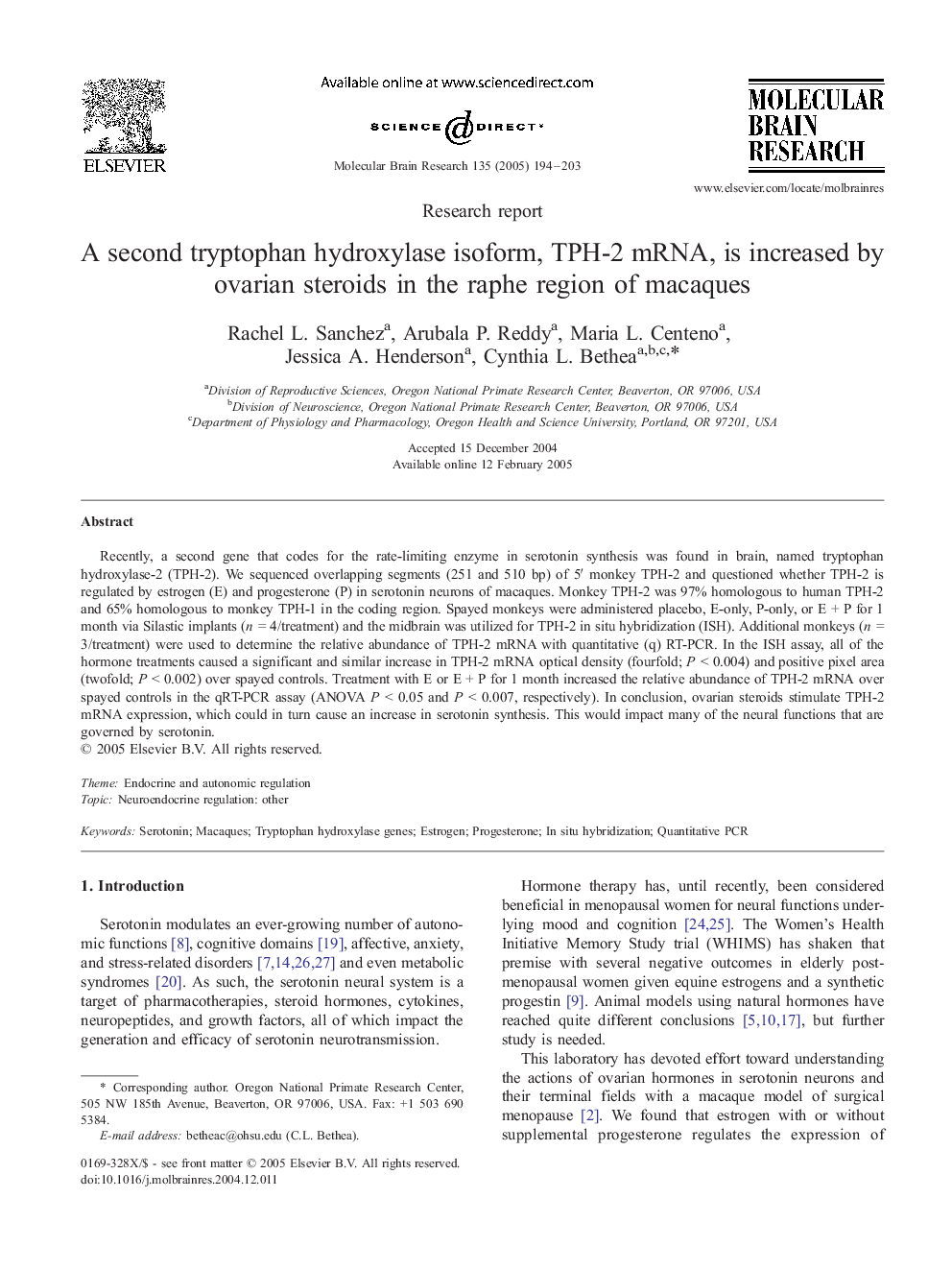| Article ID | Journal | Published Year | Pages | File Type |
|---|---|---|---|---|
| 9410680 | Molecular Brain Research | 2005 | 10 Pages |
Abstract
Recently, a second gene that codes for the rate-limiting enzyme in serotonin synthesis was found in brain, named tryptophan hydroxylase-2 (TPH-2). We sequenced overlapping segments (251 and 510 bp) of 5â² monkey TPH-2 and questioned whether TPH-2 is regulated by estrogen (E) and progesterone (P) in serotonin neurons of macaques. Monkey TPH-2 was 97% homologous to human TPH-2 and 65% homologous to monkey TPH-1 in the coding region. Spayed monkeys were administered placebo, E-only, P-only, or E + P for 1 month via Silastic implants (n = 4/treatment) and the midbrain was utilized for TPH-2 in situ hybridization (ISH). Additional monkeys (n = 3/treatment) were used to determine the relative abundance of TPH-2 mRNA with quantitative (q) RT-PCR. In the ISH assay, all of the hormone treatments caused a significant and similar increase in TPH-2 mRNA optical density (fourfold; P < 0.004) and positive pixel area (twofold; P < 0.002) over spayed controls. Treatment with E or E + P for 1 month increased the relative abundance of TPH-2 mRNA over spayed controls in the qRT-PCR assay (ANOVA P < 0.05 and P < 0.007, respectively). In conclusion, ovarian steroids stimulate TPH-2 mRNA expression, which could in turn cause an increase in serotonin synthesis. This would impact many of the neural functions that are governed by serotonin.
Keywords
Related Topics
Life Sciences
Neuroscience
Cellular and Molecular Neuroscience
Authors
Rachel L. Sanchez, Arubala P. Reddy, Maria L. Centeno, Jessica A. Henderson, Cynthia L. Bethea,
